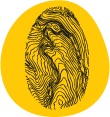
Analyzing land cover changes and urbanization pattern in a tourist Mediterranean landscape (Rimini, Italy)
Over the past sixty years rapid urbanization has significantly modified ecosystem structures, functions and services in many Mediterranean landscapes, especially where flood plain and coastal areas occurred (European Environment Agency, 2006). Analyzing such of changes in a spatial-temporal framework and quantifying the loss of Ecosystem Services is needed both to understand and assess the ecological consequences and to plan sustainable management for the future (Lautenbach et al., 2011).
Rimini (North eastern Italy) is an outstanding example of Mediterranean coastal urbanization, which has been affected many western European tourist areas, and where urban spread was accompanied by steady agricultural intensification and/or decline. By the comparison of three maps derived from interpretation of remote sensing data we assessed land cover changes in the Rimini Municipality since the mid 1950s. Each map was analyzed using landscape metrics, while direction, quality and, magnitude of transitions were obtained by overlaying pairs of maps. By the multivariate ordination techniques the derived data set was analysed to detect the main direction of change. We also calculated changes in land cover capacity to supply regulating Ecosystem Services, which are responsible for human welfare (Costanza et al., 1997; Turner et al., 2007; Scolozzi et al., 2012).
Since the mid ‘50s more than 70% of the Rimini landscape substantially changed, mainly caused by agricultural intensification (46%) and urbanization (19%), mostly occurred in the floodplain area. As to regulating Ecosystem Services, Rimini municipality landscape, lost its capacity to provide much of these services as flood protection or water purification.
Evaluation of land cover change and ecosystem services supply represent a preliminary appraisal of the ecological processes involved in land use change that may foster strategies for sustainable landscape planning and management.
- Costanza, R., d’Arge, R., de Groot, R., Farber, S., Grasso, M., Hannon, B., Limburg, K., Naeem, S., O’Neill, R.V., Paruelo, J., Raskin, J.R., Sutton, P., van den Belt, M. (1997). The value of the world’s ecosystem services and natural capital. Nature 387, 253–260.
- European Environment Agency(2006). The changing faces of Europe's coastal areas. EEA Report No 6/2006. European Environment Agency, Copenhagen
- Lautenbach, S., Kugel, C, Lausch, A., Seppelt, R. (2011). Analysis of historic changes in regional ecosystem service provisioning using land use data. Ecological Indicators 11, 676–687
- Scolozzi R., Morri E., Santolini R.(2012). Delphi-based change assessment in ecosystem services values to support strategic spatial planning in Italian landscapes. Ecological Indicator 21, 134-144
- Turner, W.R., Brandon K., Brooks T.M., Costanza R., Da Fonseca G.A.B., Portela R.(2007). Global Conservation of Biodiversity and Ecosystem Services. BioScience 57, 868-873
